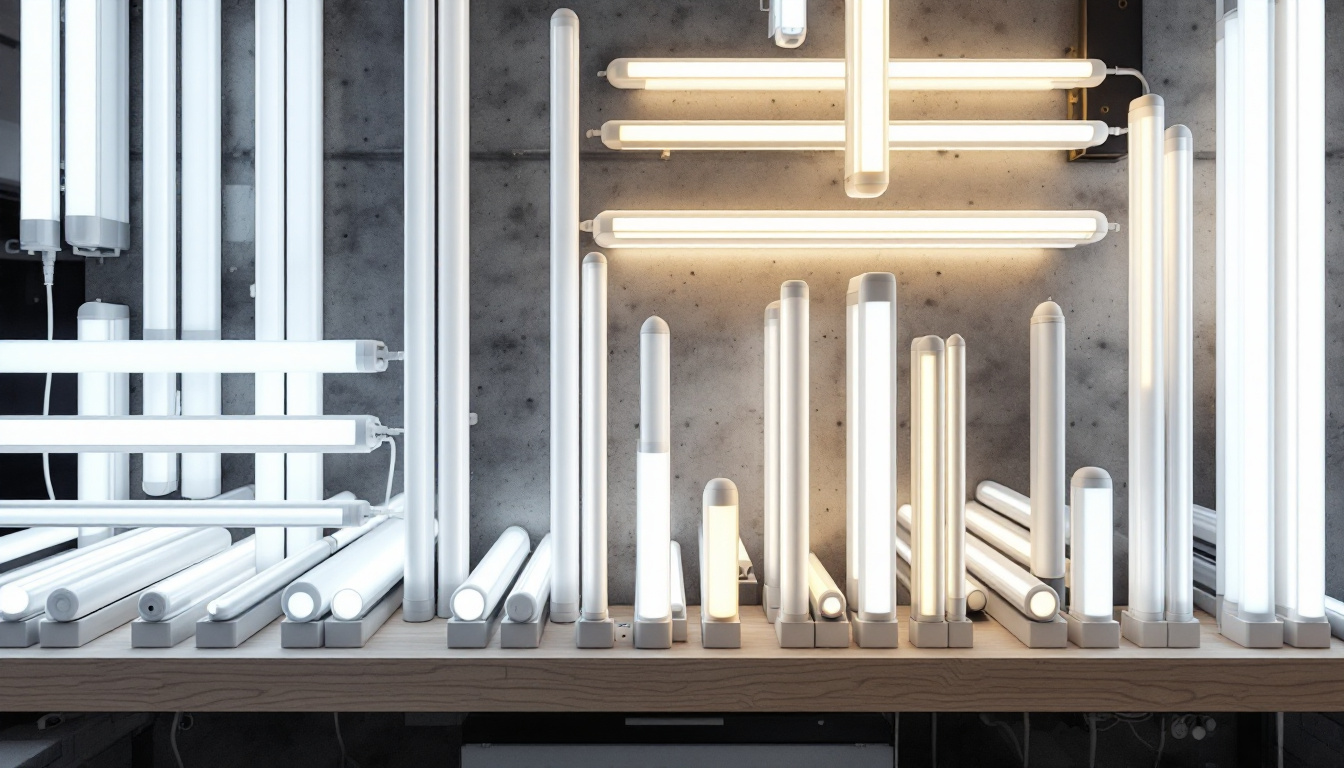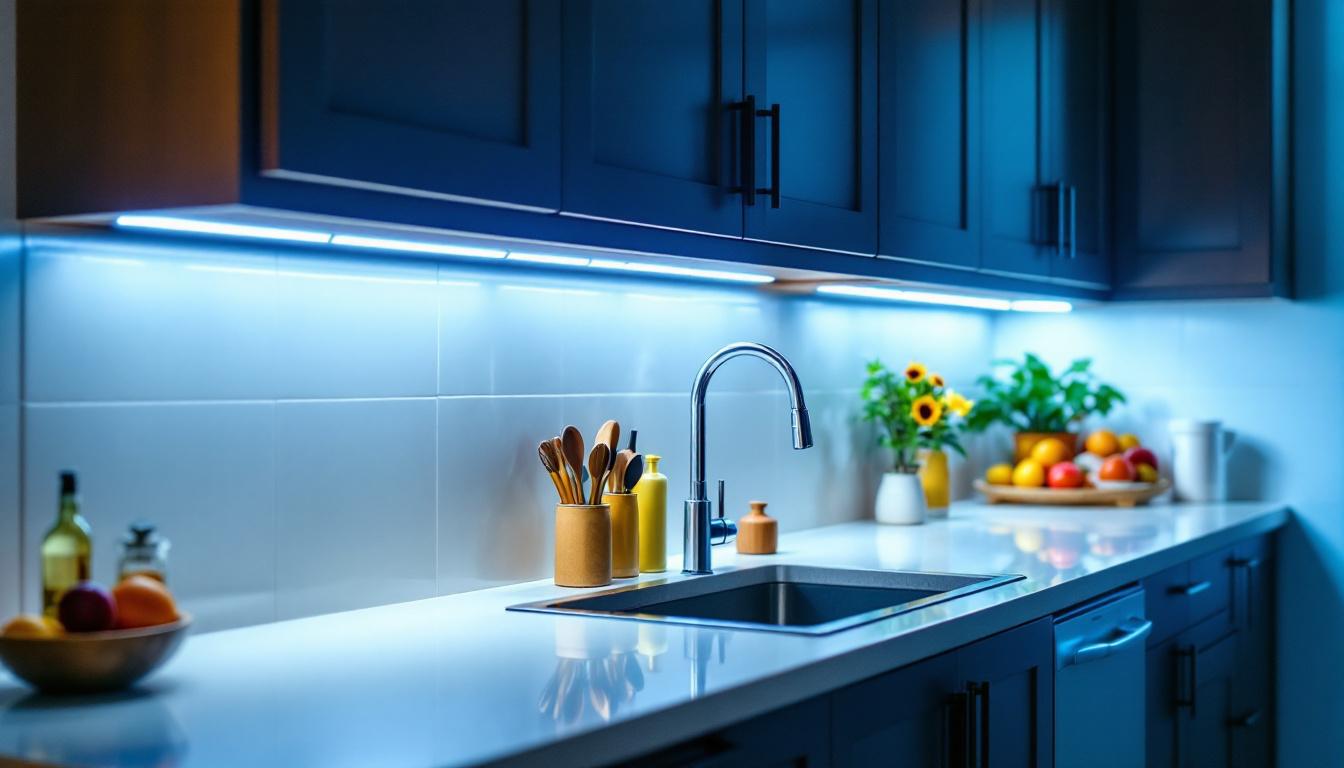The lighting industry has witnessed a significant transformation with the introduction of LED technology. As a lighting contractor, understanding the advantages of new LED lights can greatly enhance project efficiency and client satisfaction. This article delves into how these advancements can streamline operations, reduce costs, and improve overall lighting quality.
LED, or Light Emitting Diode, technology has revolutionized the way we approach lighting. Unlike traditional incandescent or fluorescent lights, LEDs offer a myriad of benefits that make them a preferred choice for various applications. Their energy efficiency, longevity, and versatility are just the tip of the iceberg.
One of the most compelling reasons to switch to LED lighting is its energy efficiency. LEDs consume significantly less power than traditional lighting options, which translates to lower electricity bills for clients. This efficiency is particularly beneficial in large-scale projects where the cumulative savings can be substantial.
Moreover, the reduced energy consumption contributes to a smaller carbon footprint, aligning with the growing demand for sustainable practices in the construction and renovation sectors. Contractors can market their projects as environmentally friendly, which is an attractive selling point for many clients. Additionally, many regions offer incentives for using energy-efficient lighting, such as rebates or tax credits, further enhancing the financial appeal of LED installations.
LED lights have an impressive lifespan, often lasting up to 25 times longer than traditional bulbs. This longevity means fewer replacements and less maintenance, which can significantly reduce project costs over time. For contractors, this translates into fewer callbacks and enhanced client satisfaction.
Additionally, LEDs are more durable than their counterparts. They are resistant to shock, vibrations, and extreme temperatures, making them ideal for a variety of environments. This durability ensures that lighting installations remain functional and aesthetically pleasing for years, which is a crucial consideration for any lighting project. Furthermore, the solid-state nature of LEDs means they are less prone to breakage compared to fragile incandescent bulbs, making them a safer option in both residential and commercial settings.
Another aspect of LED technology worth noting is its adaptability to different design needs. With the ability to produce a wide range of colors and intensities, LEDs can be tailored to enhance the ambiance of any space, whether it’s a cozy home, a bustling office, or an artistic gallery. This versatility extends to smart lighting solutions, where LEDs can be integrated with smart home systems, allowing users to control lighting remotely and set schedules or moods with ease. Such features not only elevate the user experience but also contribute to energy savings by ensuring lights are only on when needed.
Incorporating new LED lights into projects not only improves the final product but also enhances the efficiency of the entire lighting installation process. From planning to execution, LEDs can streamline operations in several ways.
LED fixtures are often designed to be more compact and lightweight compared to traditional lighting options. This design feature simplifies the installation process, allowing contractors to work more quickly and efficiently. With less cumbersome equipment, teams can navigate tight spaces and complete installations in a fraction of the time.
Additionally, many new LED fixtures come with advanced mounting options and built-in controls, further simplifying the installation process. This innovation reduces the need for additional components and minimizes the risk of errors during setup, ultimately leading to smoother project execution.
Moreover, the longevity of LED lights means that once installed, they require less frequent maintenance and replacement compared to traditional bulbs. This not only saves time during the project lifecycle but also reduces long-term operational costs for clients. The durability of LEDs, combined with their energy efficiency, makes them an attractive option for both residential and commercial projects, ensuring that the initial investment pays off over time.
The integration of smart technology with LED lighting has opened up new avenues for efficiency. Smart LEDs can be controlled remotely, allowing for real-time adjustments to brightness and color temperature. This capability not only enhances the user experience but also allows contractors to optimize lighting based on specific needs and conditions.
For example, in commercial spaces, smart lighting can adjust automatically based on occupancy or natural light levels, ensuring that energy is used only when necessary. This adaptability can lead to significant energy savings, making projects more cost-effective and appealing to clients.
Furthermore, the ability to program lighting schedules and scenes can enhance the ambiance of a space, catering to different activities throughout the day. In environments such as offices, schools, or retail spaces, this flexibility can improve productivity and customer satisfaction. By leveraging data analytics, project managers can also gain insights into usage patterns, allowing for even more tailored lighting solutions that meet the evolving needs of the space and its occupants.
Investing in new LED lighting technology can lead to substantial cost savings for both contractors and their clients. Understanding these financial benefits can help contractors make a compelling case for the adoption of LEDs in their projects.
As previously mentioned, LED lights consume less energy than traditional lighting options. This reduction in energy usage directly translates to lower utility bills for clients, making LED installations a financially sound choice. For contractors, this means satisfied clients who are more likely to refer their services to others.
Furthermore, many regions offer incentives and rebates for energy-efficient upgrades, which can further offset the initial investment in LED technology. Contractors who stay informed about these programs can help clients take advantage of available savings, enhancing their overall value proposition.
With the extended lifespan of LED lights, maintenance costs are significantly reduced. Fewer replacements mean less time and resources spent on maintenance tasks. This aspect is particularly advantageous for commercial clients who may have large facilities requiring extensive lighting systems.
By minimizing maintenance needs, contractors can allocate their resources more effectively, focusing on new projects rather than ongoing upkeep. This shift not only improves operational efficiency but also allows for greater profitability in the long run.
The quality of lighting is paramount in any project, and new LED technology excels in this area. Enhanced lighting quality can lead to improved aesthetics and functionality, which are critical factors for client satisfaction.
LED lights offer superior color rendering capabilities compared to traditional lighting options. This means that colors appear more vibrant and true to life under LED illumination. For contractors, this is particularly important in settings such as retail spaces or art galleries, where accurate color representation is essential.
By providing clients with high-quality lighting solutions, contractors can enhance the overall appeal of their projects, making them more attractive to end-users. This improvement in lighting quality can also lead to increased sales and customer satisfaction in commercial environments.
New LED technology allows for a wide range of design possibilities. From sleek, modern fixtures to customizable lighting solutions, the versatility of LEDs enables contractors to meet diverse client needs. This flexibility can be particularly beneficial in unique or challenging spaces where traditional lighting may not be suitable.
Additionally, the ability to adjust brightness and color temperature means that contractors can create tailored lighting experiences that enhance the functionality of a space. Whether it’s a cozy ambiance for a restaurant or bright, focused lighting for a workspace, LEDs can deliver the perfect solution.
While the benefits of new LED lighting technology are substantial, it is essential for contractors to be aware of potential challenges and considerations when implementing these solutions in their projects.
One of the primary challenges associated with LED lighting is the initial investment. Although prices have decreased significantly, the upfront cost of LED fixtures can still be higher than traditional options. Contractors must effectively communicate the long-term savings and benefits to clients to justify this initial expense.
Offering financing options or highlighting available rebates can help alleviate concerns about the upfront costs. By presenting a comprehensive cost-benefit analysis, contractors can demonstrate the value of investing in LED technology.
In some cases, integrating new LED lights into existing systems may pose challenges. Compatibility issues can arise, particularly in older buildings with outdated wiring or control systems. Contractors should conduct thorough assessments before installation to identify any potential obstacles.
By proactively addressing compatibility concerns, contractors can ensure a smoother installation process and avoid costly delays. This preparation not only enhances project efficiency but also reinforces the contractor’s reputation for reliability and expertise.
The advent of new LED lighting technology presents a wealth of opportunities for lighting contractors. By embracing these advancements, contractors can enhance project efficiency, reduce costs, and improve the overall quality of their lighting solutions. The benefits of energy efficiency, longevity, and superior lighting quality make LEDs an attractive option for a wide range of applications.
As the industry continues to evolve, staying informed about the latest developments in LED technology will be crucial for contractors looking to maintain a competitive edge. By leveraging the advantages of new LED lights, contractors can not only meet but exceed client expectations, paving the way for successful and sustainable lighting projects.
In summary, the transition to LED lighting is not just a trend; it is a fundamental shift that can redefine the approach to lighting projects. By understanding and embracing this technology, lighting contractors can drive efficiency, enhance client satisfaction, and ultimately achieve greater success in their endeavors.
Ready to take your lighting projects to the next level? At LumenWholesale, we provide lighting contractors with the highest quality, spec-grade LED products at unbeatable wholesale prices. Say goodbye to local distributor markups and hello to superior lighting solutions that meet the strictest industry standards. With our hassle-free bulk buying and free shipping, you can ensure your projects shine with reliability and high performance, all while keeping costs down. Elevate your lighting game with the perfect combination of quality, affordability, and convenience. Discover wholesale lighting at the best value today!

Discover the ultimate guide to fluorescent tube lengths with our essential checklist tailored for lighting professionals.

Discover the transformative impact of hardwired under cabinet LED lighting through real-world success stories from lighting contractors.

Unlock the secrets of Pl S lighting with our comprehensive guide tailored for contractors.

Discover the essential insights lighting contractors need to meet client expectations for LED parking lot lights.